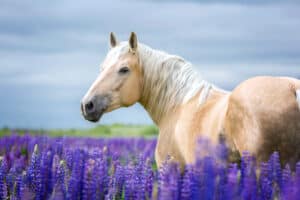This Scottish breed is quite possibly the cutest, most commonly recognized pony breed out there: the Shetland Pony! Named after the islands they lived on in Northern Scotland, this breed comes in various colors, coat patterns, and markings — from black, brown, and bay to buckskin, roan, and palomino. The only pattern you won’t see on a registered Shetland is leopard spotting like you might find on an Appaloosa. Ready to discover a wee bit more about the spunky Shetland Pony? Let’s ride!
History of the Shetland Pony

The Shetland Pony originates from the Shetland Islands in Scotland.
©Alan Morris/iStock via Getty Images
Hailing from Northern Scotland, these ponies adapted to the harsh environment of where they originated: the Shetland Islands. Tough and resourceful, they were used for a variety of tasks by locals.
Shetlands were used to carry peat from the bogs to the cottages and seaweed from the shore to the fields. They also hauled coal cars out of British mines during the 19th century. Their short stature allowed them to travel easily under the mine’s low tunnels with heavy cars of coal.
Speaking of height… why are Shetland Ponies so small?
Why is a Shetland Pony So Small?
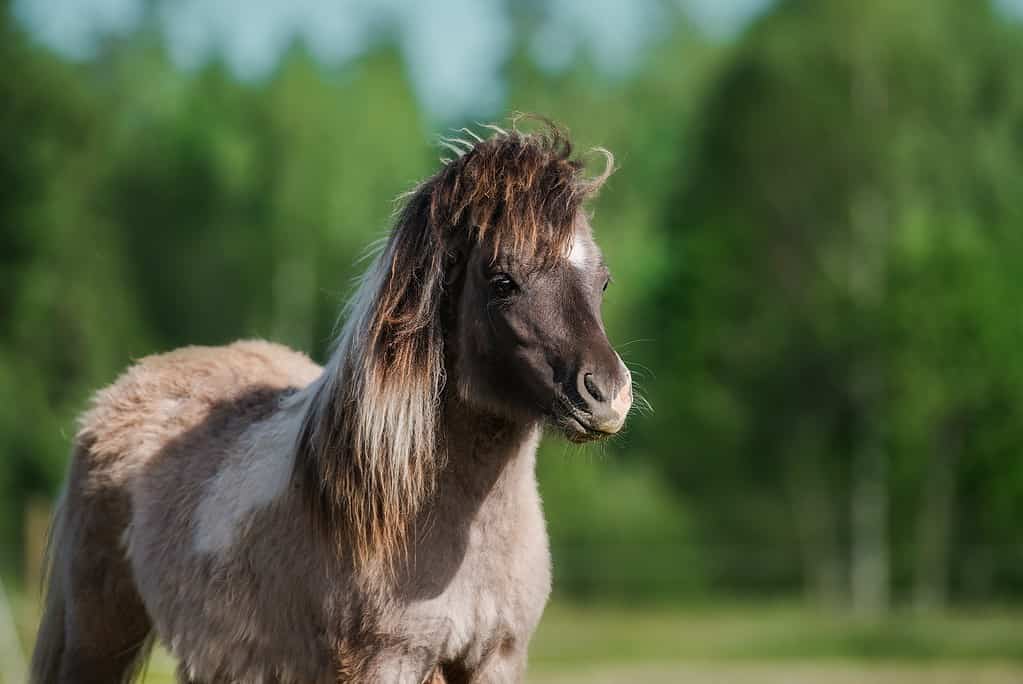
The average height of a Shetland is only 9.3 hands high! That’s because they are a pony, not a horse, breed.
©Rita_Kochmarjova/Shutterstock.com
You might have noticed that the Shetland is described as a pony, not a horse. What’s the difference? Height.
Pony breeds don’t exceed heights above 14.2 hands high. That’s why Haflingers and Icelandics, while typically small in size, are horse breeds. They can grow up to 15 or 15.3 hands high, respectively.
So how tall (or should we say short) are Shetland Ponies? 11.2 hands high is the maximum height of a Shetland Pony, but the average is closer to 9.3 hands high. Plus, they usually top out between 200 and 450 pounds… talk about tiny!
Average Price and Cost to Own a Shetland Pony
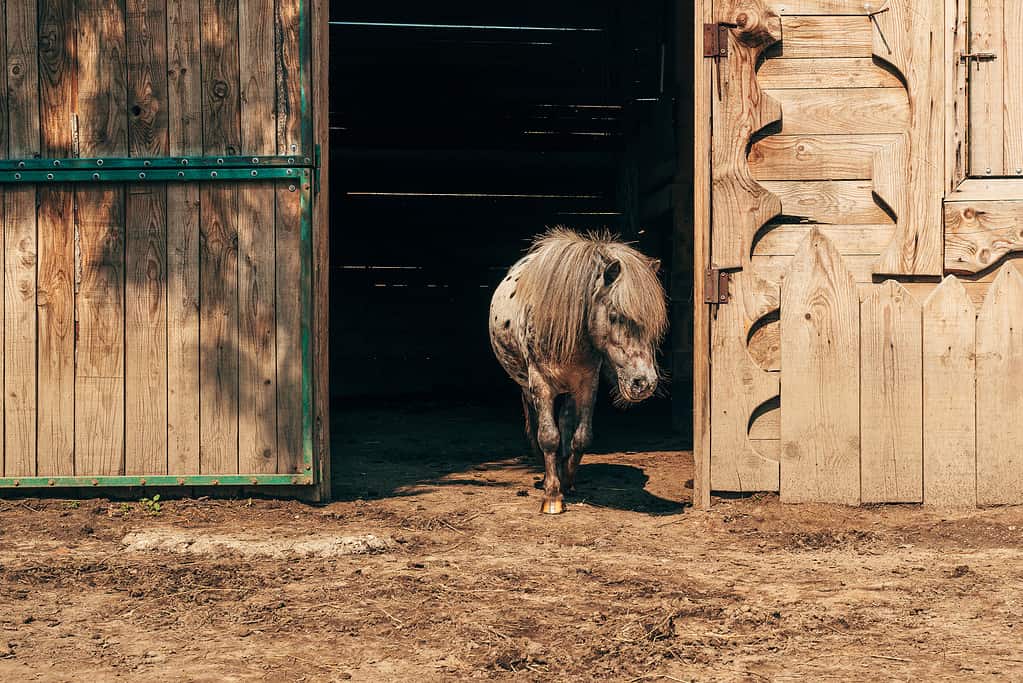
Buying and owning a pony isn’t cheap, but their smaller size means they don’t need as much food or medicine as a full-sized horse does.
©BitsAndSplits/iStock via Getty Images
Despite their small stature, they pack a punch as a pet. They are living, breathing livestock that need food, water, shelter, care, and companionship. But they also have a lot to give!
If you’ve ever wanted to know the price of a Shetland Pony or the ongoing cost of ownership, we have you covered.
Price to Buy
Buying a pony can be just as expensive as buying a horse. You might think the smaller breeds will be cheaper, but think again! You are still purchasing a large animal, even if they don’t stand as tall as others.
The average cost for a Shetland depends on a few factors:
- Location
- Age
- Sex
- Level of training
- Bloodline/pedigree
- Past winnings, if you’re buying an established pony
- Whether you adopt or buy from a private breeder
The good news is that you likely won’t pay over $5,000 for a quality Shetland. Instead, you’ll pay closer to $2,000. This is significantly less than a purebred Arabian horse but about the same as a wild Mustang.
Cost to Own
Just like the price to buy a pony is dependent on a variety of factors, there are also things to consider once you have a Shetland in your stall such as:
- Boarding costs
- Feed expenses (hay, grain, supplements, pasture maintenance)
- Equipment and supply costs
- Training or riding lesson rates
- Farrier fees
- Medications and vet expenses
At a minimum, expect to pay around $500 a year on feed and routine farrier or vet visits to keep your pony happy. This cost goes up if you board, ride, or take lessons. Also, be sure to account for unexpected vet bills! While not likely because of the hardiness of the Shetland Pony breed, it’s always good to be prepared.
The final consideration is whether or not your pony has a companion to keep them company. Horses are social animals, so keep that in mind before you buy.
With costs out of the way, let’s discuss the character and personality of Shetlands.
Are Shetland Ponies Good Pets?
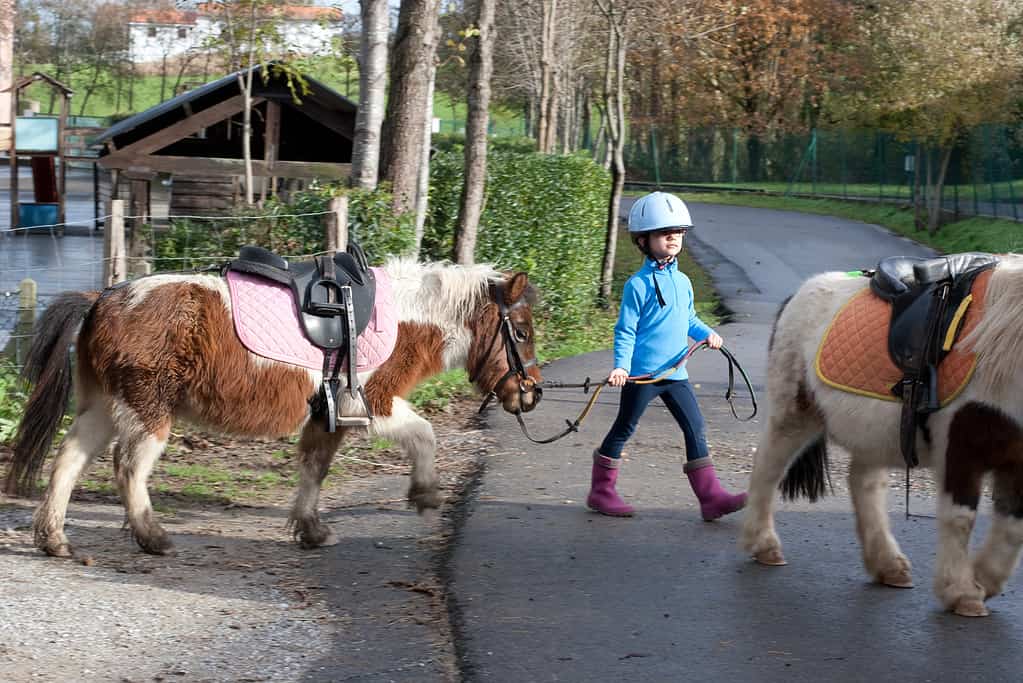
Not all breeds make great mounts for children and junior riders, but Shetlands are one of the best for beginners because of their intelligent, docile nature.
©ASIFE/iStock via Getty Images
Shetlands make some of the best pets for horse lovers because of their animated personalities, pocket size, and brute strength. Some are lazier, always making time for a snack, while others can only be described as “spirited.”
This pony might not be for you if you want a refined ride to take you to the upper-level show rings. But if you want a fun, cheeky breed with a heart of gold to play around with then you want a Shetland Pony!
Can You Ride a Shetland Pony?
You can absolutely ride a Shetland Pony! They are small, so you have to be sure you are an appropriate size to ride them comfortably.
To figure that out, follow the 20% rule! A horse or pony can carry up to 20% of its weight (including tack). Typically, the maximum weight they can carry is around 100 pounds, but it depends on the individual pony’s height and capabilities.
While it may be a bummer to hear this if you’re an adult, this is part of what makes them excellent for children who want a fun, size-appropriate mount. Their gentle yet willing demeanor is also great for junior riders who want to make a splash in the pony hunter ring.
The other option is to use them for carriage driving or harness racing. This opens them up to children and adults of all shapes and sizes! For how tiny they are, they can pull a lot of pounds — up to twice their body weight! This is more than draft horses, who can only pull up to half their body weight.
How Fast Can Shetland Ponies Run?
Despite their stout size, Shetland Ponies with the zoomies can reach speeds of up to 20 miles per hour! They may not be as quick as some of the fastest horses on Earth, but they can give them a run for their money. Especially for how short a Shetland’s legs are!
That’s why this breed often competes (and wins!) in sanctioned Shetland Pony races with junior riders who want to practice jockeying.
How Long Do Shetlands Live?
Like most horses and ponies, Shetlands live to be between 25 and 30 years old. They are a hardy breed with limited health conditions to watch out for, even as they reach old age.
The two issues you might run into with a Shetland Pony are heart problems and laminitis, due to their size and breed type. However, a carefully managed diet — without excess grain or lush grasses — can prevent laminitis in this moorland breed.
What Are the Disadvantages of Shetland Ponies?
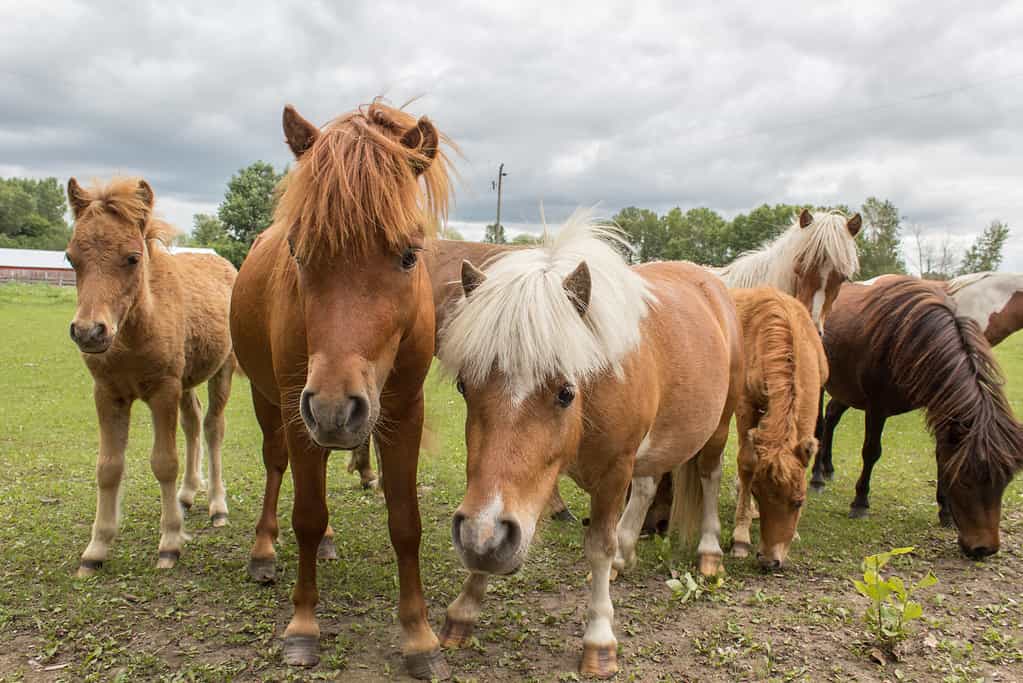
Shetlands are notoriously cheeky and prone to being overweight, but there’s no other breed quite like this spunky pony.
©libertygal/iStock via Getty Images
As you can see, there are many pros to the Shetland Pony. But what about the hard parts of owning this special, spunky breed? We already mentioned their potential health problems, but there are just a few more things to consider before saying “yes” to a Shetland.
Here are the top three disadvantages of owning a Shetland Pony:
- They’ll gobble up all of your treats
- You’ll spend all of your time at the barn with them
- They’ll steal your heart
But don’t worry, you won’t ever want it back.
The photo featured at the top of this post is © Ray Orton/iStock via Getty Images
Thank you for reading! Have some feedback for us? Contact the AZ Animals editorial team.




